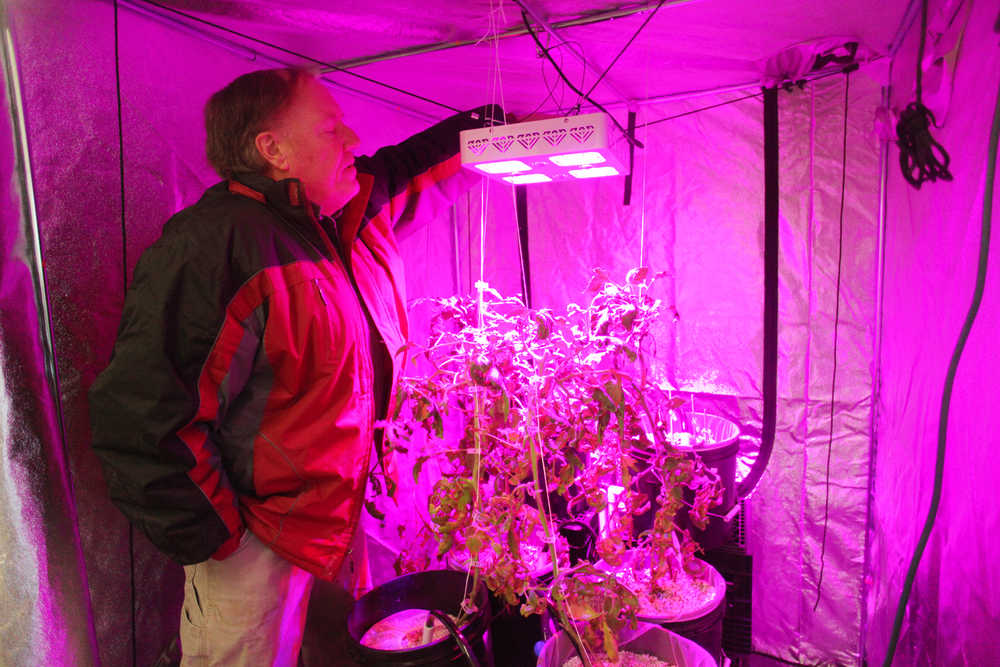The gardener who broke the record for largest tomato at the Alaska State Fair this summer is braving an attempt at producing another phenomenal fruit this winter.
Patrick White is up against more than two dozen contestants worldwide who are trying to grow giant tomatoes indoors. Forgoing shoes, White scuffled around his unusually warm garage Wednesday, explaining the hand-rigged system that is feeding four genetic clones of the plants that won him the award this summer.
“There is no soil at all, just Perlite,” White said with a laugh. “That’s all it is.”
Under a large black tent, six containers are kept off the cold ground with retired milk crates. The two in back have the thin onion greens peeking out. White is also, of course, trying to break the world record with the seeds he purchased from the United Kingdom’s Peter Glazebrook, who produced the current champion, a nearly 19-pound onion. He has to cultivate the sour vegetables inside for five months before transplanting them into the ground.
White said he hasn’t heard of another tomato grower in Alaska that has taken up the challenge this season.
He picked up a small handful of the tiny white pebbles that the roots trail through to present the foundation that is insusceptible to disease and rot. He also pointed out the series of tubes that supply water to the sprouting systems for two hours every six hours and then is drained with a large pipe.
Heating and lighting are also set to timers, which are replicating similar, if not exact, conditions that their mother plants received in the largest of three high tunnels White has in his Soldotna backyard this summer. The plants get 12 hours of sunlight and sit in temperatures of 80 degrees Fahrenheit for that time, and then at 60 degrees Fahrenheit “overnight,” he said.
The LED lights White uses cost more than the high-intensity discharge HID lamps used for indoor growing, but they use about one-fourth of the power.
He also notes that construction was accomplished on the cheap. Building the hydroponic operation from scratch also saved considerable money and, he added, the timers were only $11 each.
White feeds his fruit with a formulated mixture of calcium nitrate, magnesium sulfate, sodium bicarbonate “to increase alkalinity” and pH down to lower the acidity.
There are some limitations to the system, White said. People run into trouble when they expect too much from the LED bulbs, he said. The two tallest tomato plants are the only ones with green fruits two months after germination, he said. But he plans to keep them on the vine for another 60 days, which should be enough to get close to the goal.
White said he is aiming for much larger than the one-pound bodies that have been reported as the benchmark by his competitors. He is consistently tending to his tiny patch and when he is gone from the state for any period of time, his son Stephen, who helped with the nearly five-pound record breaker, steps in.
The challenge finishes on the first day of spring, and all entries will be verified and honored by the Great Pumpkin Commonwealth, which officiates the Alaska state fair’s crops department entries.
White’s entries for the 2015 contest took the fourteenth, sixteenth, twenty-fourth and forty-eighth spots out of nearly 300 entries for the world’s largest tomatoes. The plants he is nourishing now will be replanted in his high tunnel in on May 1, along with other clones to go for the record again this year.
Reach Kelly Sullivan at kelly.sullivan@peninsulaclarion.com.

